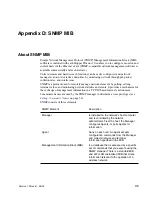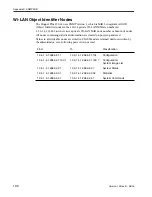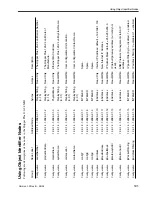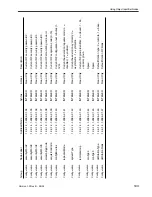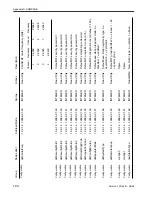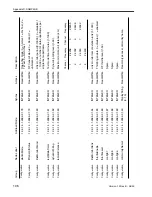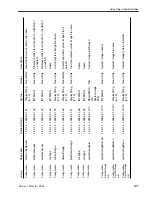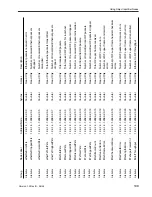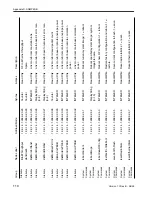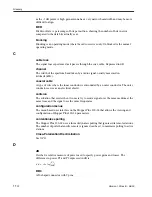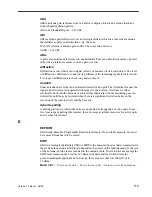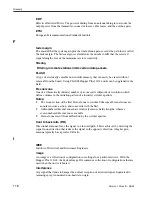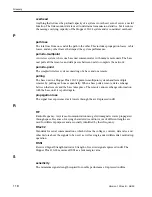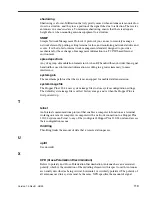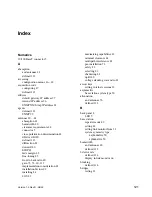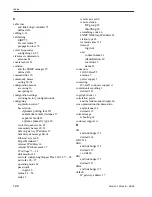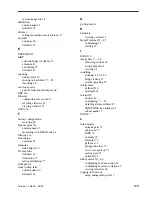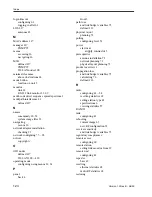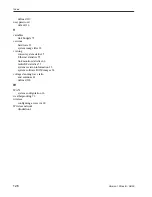
Version 1.0 Rev B - 08/00
113
Glossary
A
absorption
Antennas mounted too close to soft objects, such as trees, may experience a reduction in
signal strength due to absorption. Absorption is most often encountered in applications
installed during the fall or winter months. The problem does not become evident until the
spring.
acquisition code
To minimize the effects of interference, all units in a system use the same acquisition code
so the receivers can distinguish the desired signal from interfering signals.
agent
In an SNMP context, the agent runs on each unit. An agent accepts configuration
commands from the manager and collects network and terminal information specified in
the MIB.
antenna
A device which accepts electromagnetic energy from a circuit or wire and radiates it into
space rather than confining it.
antenna gain
Gain of the antenna over a dipole (dBd) or isotropic (dBi).
¥
Antennas have a gain associated with them, which is a measure of their ability to
amplify signals in their tuned band.
¥
Antenna gain is achieved by focusing the signal. A higher gain antenna has more
compressed signal.
attenuation
Any loss in signal strength, due to resistance, absorption, capacitance, or any
characteristic of the medium or design of the system.
B
beamwidth
The beamwidth of an antenna describes how a signal spreads out from the antenna as well
as the range of the reception area. Beamwidth is measured between the points on the beam
pattern at which the power density is half of the maximum power. This is often referred to

